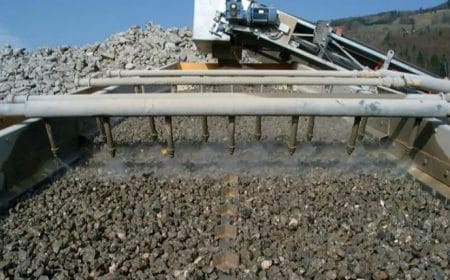Crushed Concrete Aggregates – Properties and Uses of Recycled Aggregates
Crushed concrete aggregates also called as recycled concrete aggregates are fragments and pieces of concrete buildings which are demolished or rebuild. These crushed concrete are cleaned from dirt and broken to smaller pieces to manufacture aggregate which is termed as recycled aggregate.
Crushed concrete aggregate eliminates the need for disposal by using the readily available concrete as an aggregate source for new concrete or other applications. Crushed concrete and applications is presented based on the specifications of ACI 555R-01 and Building Contractors Society of Japan.
Table of Contents
Why Use Crushed Concrete Aggregates?
There are various reasons that encourages the use of crushed concrete which include:
- It provides a low-cost alternate solution to crushing natural raw materials.
- Crushed concrete aggregate makes projects sustainable
- Concrete produced with crushed concrete aggregate has smaller carbon footprint
- It reduces the of natural aggregate depletion
- Takes less energy than mining new.
Properties of Crushed Concrete Aggregate
1. Size of Aggregate
Crushed concrete shall be processed to reach suitable sizes. It is reported that, coarse aggregate which comply with standards can be produced. However, fine aggregates are larger and more angular than that used for concrete production.
Consequently, concrete produced with crushed concrete aggregate tend to be harsh and unworkable. Adding portion of natural sand would tackle this problem. Recycled aggregate can be used without washing.

Fig.1: Processing of Crushed Concrete Aggregate

Fig. 2: Size of Crushed Concrete Aggregate
2. Density
The density of crushed concrete aggregate is smaller than natural aggregate density.
3. Water Absorption
Water absorption of recycled aggregate is greater than of natural aggregate
4. Los Angeles Abrasion Loss
Crushed concrete aggregate conform with ASTM international with regard to los angeles abrasion loss.
5. Contaminants
Present of contaminants in recycled aggregate decline strength of concrete produced with this aggregate.
Influence of Recycled Aggregate on Concrete Properties
1. Concrete Strength Reductions
By and large, strength of concrete produced from crushed concrete aggregate is lower than concrete made using natural aggregate. Strength reduction of concrete produced from recycled coarse aggregate and natural fine aggregate ranges from 5 to 24%. This influenced by strength of crushed concrete, water to cement ratio of crushed and new concrete. For concrete produced from both recycled coarse and fine aggregate is between 15 to 40%.
2. Strength Variations
Strength variation of concrete produced from recycled aggregate is higher than concrete made from natural aggregate.
3. Flexural and Tensile Strength
Concrete made form recycled concrete aggregate has lower flexural and tensile strength by 10 to 20%. However, concrete produced from coarse recycled aggregate and natural sand provide approximately the same flexural and tensile strength as concrete made from natural aggregate.
4. Modulus of Elasticity
Modulus of elasticity of concrete made with recycled coarse and fine aggregate is lower than that of concrete made with recycled coarse aggregate only.
5. Creep
Creep of concrete produced from recycled concrete aggregate is higher than concrete made using natural aggregate by 30 to 60%.
6. Drying Shrinkage
Drying shrinkage of concrete made from recycled aggregate is usually greater than concrete made using natural aggregate. the percentage of drying shrinkage soar if it is produced from recycled coarse and fine aggregate.
7. Permeability
Permeability of concrete made from recycled aggregate is greater than that of concrete produced with natural aggregate.
8. Freezing and Thawing Resistance
It is proven that freezing and thawing resistance of concrete made with crushed concrete aggregate is the same as concrete produced with natural aggregate.
9. Carbonation, Chloride Penetration, and Reinforcement Corrosion
Generally, carbonation of concrete made with crushed concrete aggregate is higher than concrete with natural aggregate, especially if the recycled aggregate suffered carbonation previously.
Similarly, rate of reinforcement corrosion in concrete produced using recycled aggregate is greater than conventional concrete.
Uses of Crushed Concrete Aggregates
Crushed Concrete has a wide variety of uses within the civil construction industry and has been incorporated into major projects. The uses of crushed concrete is divided into two major groups:
1. Uses of Crushed Concrete (Unprocessed)
In general, applications without any processing include:
- Many types of general bulk fills
- bank protection
- base or fill for drainage structures
- road construction
- noise barriers and embankments
2. Uses of Processed Crushed Concrete (Crushed Concrete Aggregate)
After processing crushed concrete aggregate can be used in the following projects:
- bridge foundations
- structural grade concrete
- lean-concrete
- bituminous concrete
- soil-cement pavement bases
- Freeways
- Airport runways
- Oil & gas civil construction projects.
- pavements
- shoulders
- median barriers
- sidewalks
- curbs and gutters
No comments:
Post a Comment